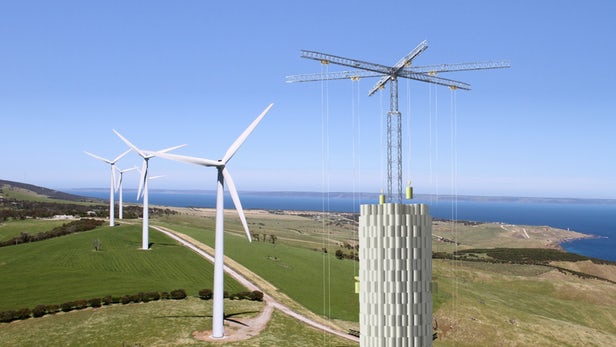Concept in Energy Storage Features New Idea, Old Technology

Is this a good idea? There is only one answer to that question, of course: it’s a function of the cost, i.e., the LCOE (levelized cost of energy) associated with installing and maintaining the device. I have no way to do the math, but it strikes me as extremely unlikely that this could possibly be cost-effective.
Even if it is today, keep in mind that all this is a moving target–one that is moving away from ancient technology like this. Here we have a blend of Newton (ca. 1660) and Faraday (ca. 1830), competing against things like advanced battery chemistries that are improving with each passing month. As I told the ARES people, if there is a window, it’s right now, and that window is closing.

Craig,
On a more realistic level, the search for successful fusion technology is slowly gathering momentum after languishing for a few decades.
Several different technical approaches are being pursued by a number of diverse projects.
Not all the projects are proceeding smoothly, the International Thermonuclear Experimental Reactor (ITER) under construction in the south of France, has beset by delays, cost overruns and controversy with doubts emerging as to whether it’s even the right design for the job.
However, the Max Planck Institute for Plasma Physics on the outskirts of Greifswald, is also building a promising prototype,the Wendelstein 7-X, The Wendelstein 7-X, is a different design and is less plague by problems.
The American company, Lockheed Martin are working on a mini-reactor which they claim is within two years of having a working prototype and 15 from commercialization.
To solve the problem of plasma containment issue, Lockheed Martin utilizes a new coil-based magnet technology in its CFR producing a more effective magnetic field for plasma containment, thereby significantly increasing the reactor’s beta limit.
If Lockheed is successful, the CFR design would represent a paradigm shift greater than the invention of steam power or the internal combustion engine. Currently one CFR unit is designed to produce 100 megawatts (MW) of electricity, enough energy to sustain 80,000 American households, or comfortably power a Nimitz-class aircraft carrier. There are even exciting applications for space travel.
China, Russia, Japan, South Korea and India have all revived interest, and more importantly, investment, in fusion technology.